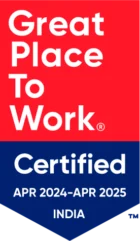Table of Contents
Introduction:
Scope creep refers to the gradual expansion of a project’s requirements, features, or deliverables beyond its original scope. It occurs when there are constant additions or changes to the project without proper evaluation, planning, or management. As a result, the project becomes larger and more complex, often exceeding its initial budget, schedule, and resources.
There are many factors which may cause a ‘scope creep’
● Lack of clearly defined scope Without a clear outlining of the scope, new requirements keep piling up and since the scope has no boundaries set in the first place, it starts losing its shape. Different people might have different ideas about what’s included in the scope, making it hard to stay focused on the project or product development.
● Poor Leadership When the project leader or product owner isn’t assertive, it can lead to scope creep in the project or product development. If the stakeholders feel that the project manager might need more expertise in handling situations, they might see a chance to become involved in adjusting the project scope.
● Lack of Communication Misunderstandings and misinterpretations of requirements may occur when stakeholders and teams fail to communicate effectively. This might result in stakeholders asking for adjustments or new features, leading to scope creep.
● Changing Priorities It is not uncommon for the stakeholders to change their priorities as per the market realities. But without a proper change request handling mechanism, it becomes quite difficult to keep the project or the product development on track.
Scope creep may impact the project in various ways.
1. Increased costs and deadlines – As the scope keeps changing, the initial estimated timelines and resources would not suffice to complete the project or the product delivery. This leads to the addition of extra resources and extended timelines which in turn increases the cost of the project.
2. Delays – Scope creep may also create project delays since extra work may be required to handle the larger scope. As a result, deadlines may be missed, harming the business’s image.
3. Decreased quality – When the team is compelled to adapt to changes, it becomes quite a challenging task to pay the same level of attention to detail and quality. Hence it hampers the quality of project delivery.
4. Reduced team morale – When the scope keeps changing frequently, the progress cannot be gauged accurately. This gives a feeling to the team that their work is being undervalued and not being acknowledged. This dampens the spirit of the team.
5. Discontented stakeholders – As the requirements keep changing very often, the productivity decreases which in turn affects the quality and increases the timelines of delivery.
There are various effective methods to avoid a scope creep
1. Determine the Scope boundaries
Preventing scope creep begins by thoroughly understanding and establishing the project’s scope well in advance of its commencement.
A well-crafted Statement of Work that outlines elements such as : Project Objectives, Schedule, Deliverables, Payments, and Expected Outcomes.
2. Create a Change Management Procedure
Project Managers or the Product Owners must create a change management procedure to control scope creep successfully. Change Management Procedure is essentially a workflow to handle the proposed changes. The ideal way is to keep track of the proposed changes, impact of the change, decision to make the change and a plan to implement the change.
3. Documenting the requirements using User Stories
Utilizing a project management tool simplifies the process of documenting requirements significantly. User stories are instrumental in pinpointing precise requirements and ensuring that the entire team is aligned. These user stories, presented from the users’ perspective, are concise and simplified statements. Engaging stakeholders at an early stage with these crafted user stories would provide the team with a clear understanding of the development criteria.
4. Utilizing a Project Management Software
Project managers can streamline progress tracking and foresee scope management by utilizing project management software. Monitoring the project’s progress proves more effective than relying solely on the Project Plan to identify potential issues that could lead to scope creep. Project managers can detect deviations from the project plan and promptly address them to prevent scope creep by consistently assessing project progress.
5. Ensuring frequent communication
Regular communication assists the team in reducing unexpected challenges. Achieved through practices such as conducting Daily Standups and periodic development demos, it involves revisiting and reviewing scope adjustments to ensure alignment with objectives. This approach minimizes assumptions, miscommunications, and helps ensure a transparent and well-defined scope.
6. Performing timely Risk Assessments
Engaging in risk assessments is another essential strategy to manage scope creep. Teams can mitigate the risk of scope creep by identifying potential challenges and establishing preventive measures in advance. Commencing the project with a risk assessment and regularly updating the status during its progression is imperative. By employing this approach, project managers can proactively anticipate and address risks that could lead to scope creep, thereby maintaining the project’s schedule and budget.
Conclusion
Many a times we see a change in scope of the project during development leading to a scope creep. To prevent this, each team should adhere to established protocols that include transparent communication, a meticulously structured plan, an efficient change management strategy, and well defined priorities.
Implementing these measures will not only save time, money, and effort but also foster a positive relationship with all stakeholders.








